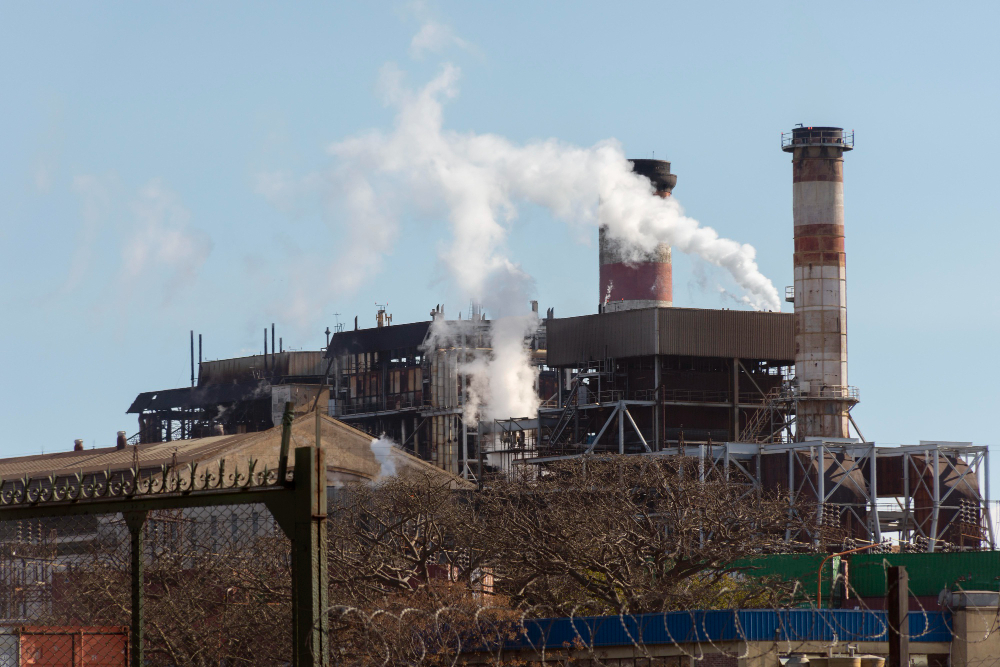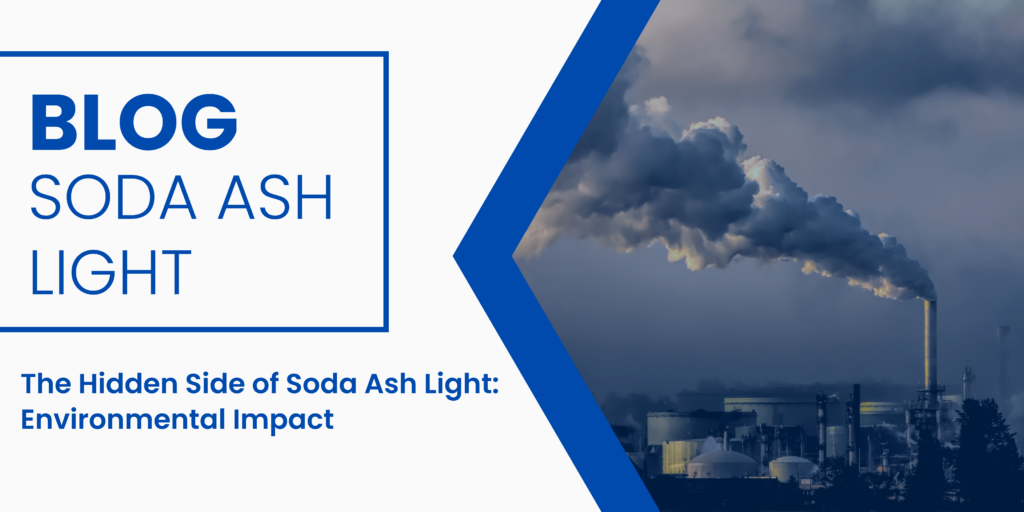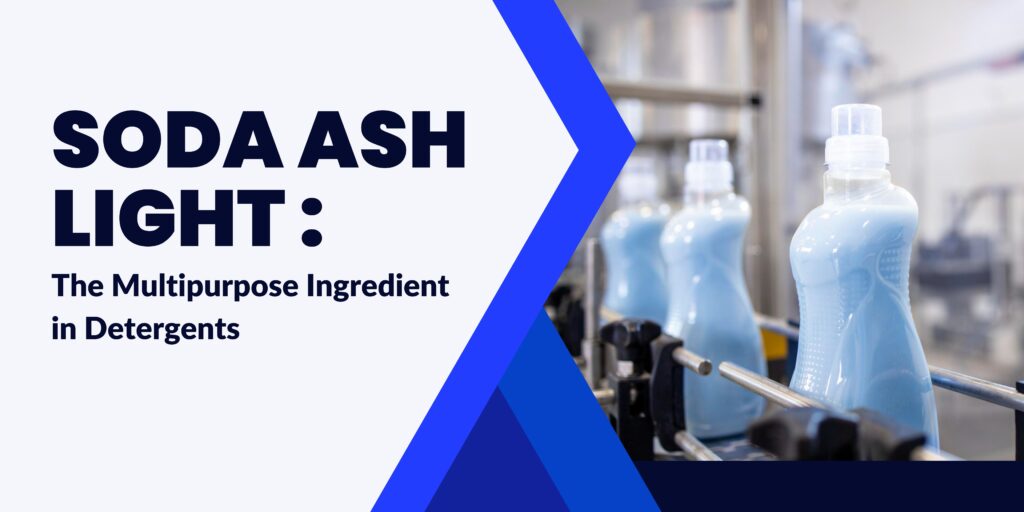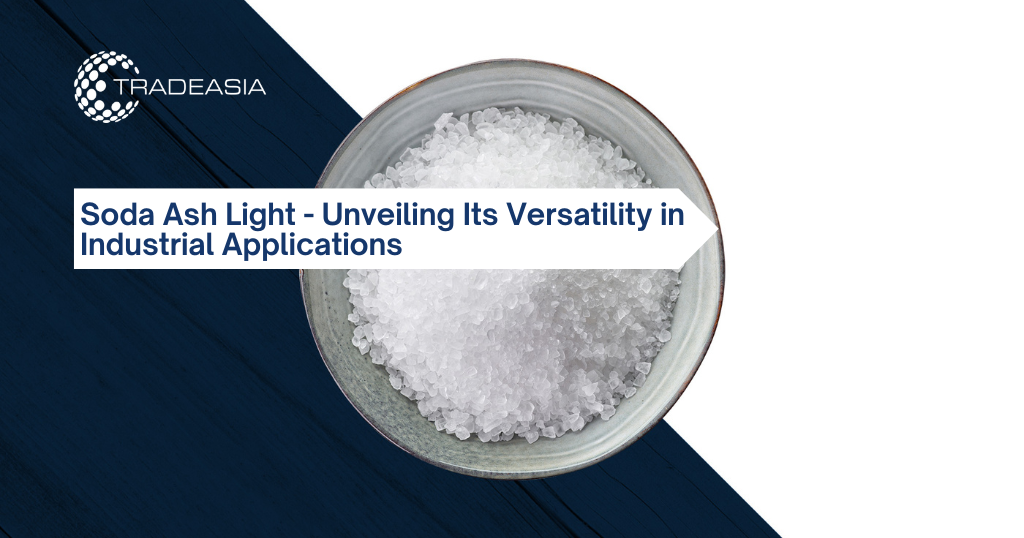
Introduction
Soda ash light, also known as sodium carbonate, is a vital compound with a wide range of industrial applications. This comprehensive article delves into the fascinating chemistry of soda ash light and its significant role in various industries. We will explore its properties, and manufacturing process, and highlight eight major industrial applications where it plays a crucial role.Glass Manufacturing
Soda ash light is a fundamental ingredient in the glass manufacturing industry. Its chemical properties and unique characteristics make it an essential component for producing high-quality glass products. One of the primary functions of soda ash light in glass manufacturing is to act as a flux. When added to the glass batch, it lowers the melting temperature, facilitating the fusion of various raw materials. This results in a more efficient melting process, reducing energy consumption and production costs.
Furthermore, soda ash light helps to control the viscosity of molten glass, making it easier to shape and manipulate during the forming process. It also aids in the reduction of bubbles and imperfections in the glass by serving as a clarifying agent. Soda ash light reacts with impurities and helps to remove them, resulting in a clearer and more transparent glass product.
Additionally, soda ash light contributes to the stability and durability of glass. It enhances the chemical resistance of glass, making it suitable for a wide range of applications, including windows, bottles, containers, and flat glass for automotive and architectural purposes. The use of soda ash light in glass manufacturing ensures that the final products meet the desired standards of strength, transparency, and clarity.
Detergent Manufacturing
Soda ash light is a key ingredient in the production of detergents. Its alkaline properties make it an effective pH regulator, allowing detergents to maintain the desired pH level for optimal cleaning performance. By adjusting the pH, soda ash light enhances the effectiveness of detergents in breaking down dirt, grease, and stains on various surfaces.
Furthermore, soda ash light acts as a water softener in detergent formulations. In hard water regions, the presence of calcium and magnesium ions can interfere with the cleaning process and reduce the efficiency of detergents. Soda ash light reacts with these ions, converting them into soluble compounds and preventing the formation of scale. This improves the cleaning power of detergents and helps to maintain the longevity of washing machines and other cleaning appliances.
Moreover, soda ash light contributes to the overall performance of detergents by assisting in the dispersion of dirt and soil particles. It helps to keep the suspended particles in the water and prevents them from redepositing on surfaces during the cleaning process. This ensures a thorough and effective cleaning experience.
In addition to its role in household detergents, soda ash light is also utilized in industrial cleaning applications, such as in the cleaning of commercial kitchens, breweries, and manufacturing facilities. Its alkalinity and pH-regulating properties make it an essential ingredient for achieving optimal cleaning results in these settings.

Textile Industry
The textile industry extensively relies on soda ash light for various processes, particularly in fabric dyeing and printing. Soda ash light acts as a crucial component in the fixation of dyes to fabric fibers, ensuring vibrant and long-lasting colors.
During the dyeing process, soda ash light is used as a pH regulator. It helps to create the optimum alkaline conditions required for dye molecules to bond with the fabric. This enhances the affinity of the dye for the fabric and improves colorfastness, ensuring that the colors remain bright and resistant to fading during subsequent washes.
Moreover, soda ash light aids in the removal of impurities and excess dye from fabrics. It acts as a washing agent, helping to wash out any residual dye particles and impurities that may be present after the dyeing process. This ensures that the final fabric is clean, free from unwanted coloration, and ready for further processing or use.
Soda ash light also plays a role in textile printing, where it is used to prepare the fabric for the application of dyes or pigments. It assists in the pre-treatment process, which involves the removal of impurities, such as wax, oils, and sizing agents, from the fabric surface. By enhancing the cleanliness and absorbency of the fabric, soda ash light prepares it for better color uptake during the printing process.
Additionally, soda ash light is used in the reactive dyeing technique, which is widely employed in the textile industry. In this process, soda ash light helps to activate the dye molecules, enabling them to react with the fabric fibers and form covalent bonds. This results in excellent color fastness and wash-fast properties, ensuring that the dyed fabrics maintain their vibrant colors even after repeated laundering.
The use of soda ash light in the textile industry ensures consistent and high-quality dyeing and printing results, making it an indispensable component for achieving desirable fabric aesthetics and durability.
Pulp and Paper Production
The pulp and paper industry heavily relies on soda ash light for various stages of the production process. It offers several benefits, including pH regulation, impurity removal, and brightness enhancement.
During the pulping process, soda ash light acts as an alkaline buffer, helping to maintain the optimal pH conditions required for efficient pulping. It assists in the chemical breakdown of lignin and other impurities, improving the quality of the resulting pulp. Soda ash light’s alkalinity facilitates the separation of pulp fibers and aids in the removal of undesired substances, such as ink particles, from recycled paper.
Moreover, soda ash light contributes to the brightness and cleanliness of paper products. In the bleaching process, it is utilized as a bleaching agent or as an alkaline additive to enhance the effectiveness of other bleaching chemicals. Soda ash light aids in the removal of residual lignin and other colorants, resulting in brighter and whiter paper.
Furthermore, soda ash light plays a role in the sizing of paper. It is used as an alkali source in the process of applying sizing agents to paper surfaces. This helps to improve the strength and resistance of the paper to water penetration, ensuring that the paper maintains its integrity and dimensional stability.
By incorporating soda ash light into the pulp and paper production process, manufacturers can achieve consistent quality, improved paper properties, and enhanced overall performance of paper products.
Wastewater Treatment
Soda ash light is an invaluable component in wastewater treatment facilities due to its ability to address various challenges associated with wastewater. It is employed in multiple processes, including neutralization and precipitation, to ensure the effective removal of contaminants before the treated effluent is discharged.
In the treatment of acidic wastewater, soda ash light acts as a neutralizing agent. Its alkaline nature allows it to react with acidic compounds, such as hydrogen ions, effectively raising the pH and neutralizing the acidity. This process is crucial for maintaining the environmental balance and preventing the corrosion of equipment and infrastructure when acidic wastewater is released.
Furthermore, soda ash light is used for the precipitation of heavy metals present in wastewater. By adjusting the pH and alkalinity, soda ash light promotes the formation of insoluble metal hydroxides or carbonates, allowing for their efficient removal from the water. This precipitation process helps to reduce the concentration of harmful metals, such as cadmium, lead, and chromium, in the treated effluent, ensuring compliance with environmental regulations and minimizing the impact on ecosystems.
Moreover, soda ash light can assist in the removal of phosphates from wastewater. Phosphates are a common pollutant that can cause excessive nutrient levels in water bodies, leading to eutrophication and harmful algal blooms. Soda ash light reacts with phosphates to form insoluble compounds, facilitating their removal and contributing to the overall reduction of nutrient pollution in the environment.
Additionally, soda ash light can be used in wastewater treatment for the adjustment of alkalinity. In situations where the alkalinity of wastewater is insufficient, soda ash light can be added to raise the alkalinity levels, creating favorable conditions for subsequent treatment processes and optimizing the removal of contaminants.
The versatile applications of soda ash light in wastewater treatment highlight its importance in ensuring the effective purification of water resources, protecting the environment, and promoting sustainable water management practices.
Food and Beverage Industry
The food and beverage industry relies on soda ash light for various purposes, including as a food additive and in carbonation processes.
As a food additive, soda ash light is commonly used as a leavening agent in baking applications. It reacts with acidic components, such as acids or acidic salts, in the dough or batter, producing carbon dioxide gas. The released gas creates bubbles, which results in the desired rise and texture of baked goods, such as bread, cookies, and cakes. This leavening process contributes to the light and airy texture that consumers expect in these products.
Furthermore, soda ash light plays a crucial role in the carbonation of beverages. Carbonated drinks, such as soda, sparkling water, and beer, require the addition of carbon dioxide to create the desired effervescence and refreshing fizz. Soda ash light is utilized in the carbonation process as a source of alkalinity, enabling the proper dissolution and retention of carbon dioxide in the beverage.
In addition to its direct applications, soda ash light is also involved in the production of certain food ingredients. For example, it is used in the production of food-grade phosphates, which are widely employed as emulsifiers, stabilizers, and acidity regulators in various food products.
The use of soda ash light in the food and beverage industry ensures the production of high-quality baked goods, carbonated beverages, and food ingredients that meet the desired sensory and quality standards.

Air Pollution Control
Soda ash light plays a vital role in air pollution control, particularly in flue gas desulfurization (FGD) systems. FGD systems are designed to remove sulfur dioxide (SO2) emissions from industrial flue gases, thereby reducing air pollution and the associated environmental impacts.
Sulfur dioxide is a harmful gas released during the combustion of fossil fuels, particularly coal. It is a major contributor to acid rain and poses risks to human health and the environment. Soda ash light is used in FGD systems as a sorbent to capture and neutralize sulfur dioxide.
In the FGD process, the flue gas is passed through an absorber tower where it comes into contact with a slurry or spray of soda ash light. The alkaline nature of soda ash light allows it to react with sulfur dioxide, forming a neutral compound, typically sodium sulfite or sodium sulfate. This reaction converts the harmful sulfur dioxide into a less harmful and more manageable form.
The neutralized flue gas is then released into the atmosphere with significantly reduced sulfur dioxide concentrations, minimizing its impact on air quality and acid deposition. The by-products of the FGD process, such as sodium sulfite or sodium sulfate, can be further processed and reused in other applications or properly disposed of.
The utilization of soda ash light in air pollution control demonstrates its importance in mitigating the environmental consequences of industrial emissions and promoting cleaner and more sustainable industrial practices.
Conclusion
In conclusion, soda ash light is a versatile compound with a broad range of industrial applications. From its role in glass manufacturing to water treatment, detergent production to textile dyeing, and pulp and paper production to wastewater treatment, soda ash light plays a critical role in numerous industries. Its unique properties, including its alkaline nature and pH-regulating capabilities, make it an indispensable component for achieving desired outcomes in various manufacturing processes. As industries continue to prioritize sustainability and environmental stewardship, the applications of soda ash light are expected to evolve and expand, contributing to the development of innovative solutions and cleaner production practices.




